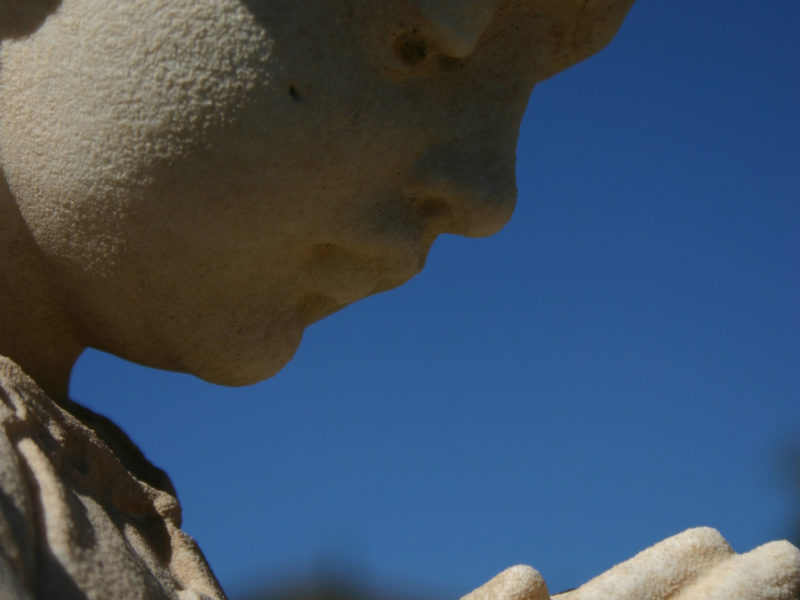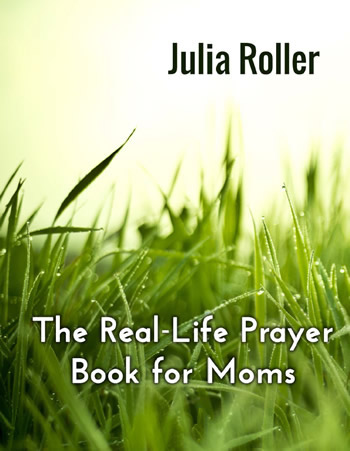I once shocked a bunch of kids while giving a children’s sermon.
I told them it didn’t matter if they bowed their heads or even folded their hands when they prayed. That they certainly could pray while kneeling with their hands folded and their heads bowed, but that they could also pray while lying in bed or running or eating lunch. I told them that some of the best times of prayer I had were while walking or folding laundry or when my hands and body were otherwise engaged.
I don’t think I’m exaggerating to say that this information blew their minds.
We sometimes forget just how literal children can be. That when we tell them to bow their heads and make “praying hands” to pray, that sometimes they think that’s the only way they can pray. Sometimes they even think that the position of their body is the most important part of prayer.
My seven-year-old struggles with this on a daily basis. He’s constantly confessing to me after we pray that he touched his head or scratched his nose or didn’t close his eyes. Over and over again I tell him I don’t believe God really cares about those things. That there is no one right position for praying. I ask him just to try to be respectful to God with his body. It is a very hard lesson for him to learn (or to unlearn).
Adults too can be guilty of limiting our ideas about prayer in this way. I once surprised a group of earnest spiritual formation-focused adults by telling them that sometimes my family prayed before dinner by holding each other’s ears instead of our hands. At the time we were trying to get our older son to stop pulling away from our hands during mealtime prayers, and the ear-holding worked beautifully. It also caused him to begin each one of these prayers with a smile on his face. It was a revelation to him, I believe, that praying could be light-hearted.
I was much older than he when I learned this lesson. It wasn’t until ninth-grade confirmation class that I first understood prayer meant simply talking to God. Until then I too had viewed prayer as something extremely formal, to be done with certain words and while in a certain pose. It came as a welcome surprise that I could just…talk. And even more surprising to me as an adult when I began to understand that you could pray while you were doing other things, that you could carry on a constant conversation with God as you were going about your day.
How do we teach our children about spontaneous, conversational prayer? Well, as with most things I’m trying to teach my children, I believe my own actions are the most effective teacher.
I try to pray aloud spontaneously when my children can hear–in the car when we see an accident, when we hear upsetting news. At night when I pray with them before bed, I try to cover a lot of different types of prayer–thanking, asking, praising–and more than one perspective by praying for concerns both within our own house and the larger world. Sometimes I put an inside joke in our prayers, thanking God for something like the baby sitting on the potty. God certainly knows our inside jokes, and I like the idea of my children smiling or even laughing in prayer. To me, the only rule is to be respectful of God, to remember that God is Creator and we are the created.
Some other ways to model prayer for our children: We can be quiet together, reminding our children that prayer also involves listening, that sometimes prayer is just trying to be quiet and listen for what God might be trying to teach us.
We can also pray aloud with our kids as we walk to school or walk the dog, thanking God for the beauty we see in creation.
We can even stop in a moment of disagreement and pray aloud about it. That is perhaps the most difficult kind of prayer to model. In these times I’m always reminded that even when I’m praying with the idea of modeling prayer for my children, God uses that prayer to help and form me. Maybe even more so than my private prayers.
I want to teach my children and to remind myself that we can come before God in prayer any time and with any emotion.
So grab those ears and try it out!





Jeanne DePascal
Beautifully said! God had shown me earlier in my walk with Him that I could literally “pray without ceasing simply by talking with him throughout my entire day. In this way I have no trouble hearing Him speak to me as well. It is an ongoing conversation with my “Husband, friend, counselor, encourager, Judge, Teacher, Disciplinarian , etc. depending on about what we are dialoging.
Thank you for sharing your heart. I am a Children’s Pastor and truly want to impart this revelation to each of them at a very early age.